The early days of Polk County are full of good stories, and we hope to bring some of them to light here; for those whose roots go down deep as well as for those newcomers who would like to learn more. The title, "Folkets Vän," means "People's Friend," but suggests also "Jesus, friend of sinners." This would have been an underlying theme appropriate to a paper coming from someone associated with Central Bible Seminary.
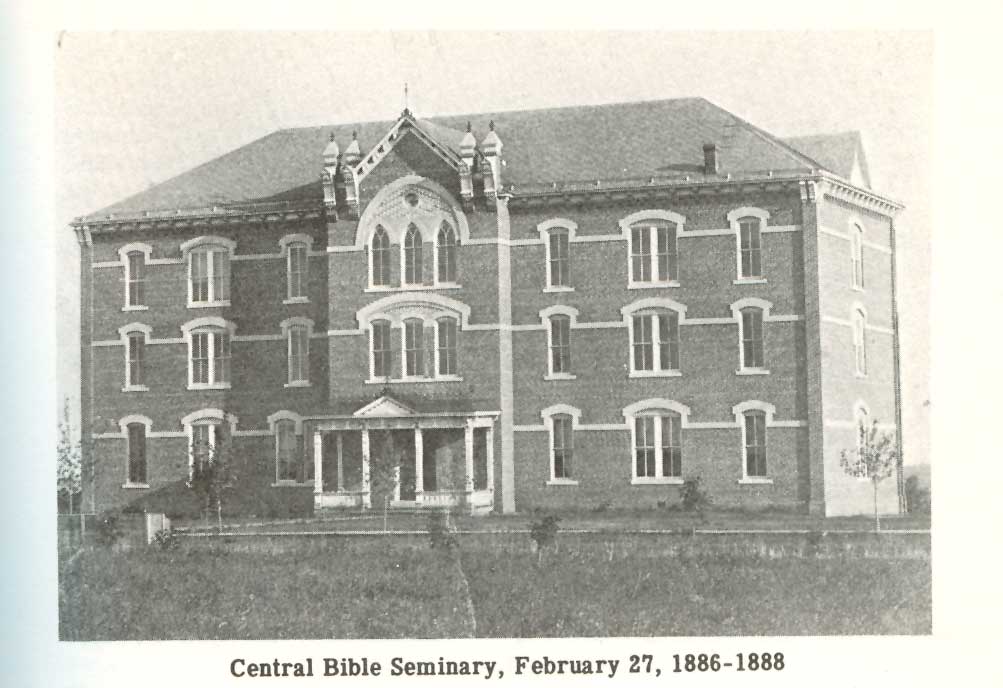
So, think of Wenngren sitting in his office in a corner of the Seminary and writing for the Stromsburg Swedes. That will be our model. If you would like to see a floorplan of the old Seminary building, it can be found online at floorplan .
-Dalakarl
...............
It is 1886 and we are sitting in an office of the Central Bible Seminary overlooking the Blue River. We're tempted to write to friends encouraging them to get down to the Stromsburg real estate office and buy a lot here. But if it had been 1876 instead, they would have more likely visited the Stromsburg real estate office...in Galva, Illinois! How did that happen?
Well, Headstrom and his colleages had a land development business going at Galva, on the Burlington railroad east of Galesburg. They were selling to new immigrant Swedes and Illinois farmers and business people whose properties had shot up in value and who could cash them in for more land at lower prices in Nebraska. The name "Stromsburg" is generally accepted as a derivation of the last part of Headstrom's name, and "burg" for "town."
Now, time out for some Swedish. If his name was "Hedström" in Swedish spelling, it would mean "stream in the moors." But, as Earl Helge Byleen once pointed out, the Swedish spelling for Stromsburg would really be "Strömsberg" meaning "mountain stream." He did not seem happy that "burg," a German word, had been used. But those things happened as Swedish was anglicized. (Think of Pittsburg, Gettysburg, etc.) Stromberg is also found as a Swedish surname.
Back to Galva. Galva and its neighboring town, Altona, were stops on the railroad next to a famous place in Swedish immigrant history. It was Bishop Hill, an early commune founded by Eric Jansson who was considered a prophet and absolute ruler. The Janssonites were amazingly successful for quite some time, and it may only have been because of their leader's arbitrariness that they collapsed. Jansson was assassinated.

Bishop Hill main building; still standing today
Do you suppose some former Bishop Hill residents found their way to Stromsburg? Communes were not exactly consistent with the American style of life though a number of examples appeared here. Former commune-ists were understandably reluctant to talk about it. It is rare to find a family history that will own up to it. But if you pore through the family stories in the wonderful 1972 Centennial Book of Stromsburg, you may be surprized as I was to find...Bishop Hill is mentioned more than once!
-Dalakarl
...........................
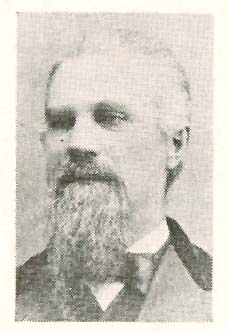
In the May 17, 1888, issue of the Headlight, the following real estate transfer appears: "L. L. Frisk to Anna Lindstrom, lots 1 & 2, block 7, Buckley's addition. $900" (this appears to be the northeast corner of the intersection of Main and 7th St.)
We had been watching for Frisk's name, and here is the reason why:
Last time we revisited Galva, Illinois, where the Stromsburg real estate office was established. Galva takes its name from the Swedish city, Gävle, about 50 miles northeast of Dalakarl's place. L. L. Frisk's father was the dompräst (Dean) of Gävle Cathedral, but when Lawrence joined the Baptist movement he was no longer welcome in his father's home. He came to America and became a well-known leader among Swedish Baptists here.
He is remembered as the first pastor of the Swedish Baptists in Chicago. His name appears among those chartering the New Sweden, Iowa, Swedish Baptist congregation and he served the congregation at Swede Bend, Iowa, as well. His latter years were spent among the Swedish Baptists at Rock Island, Illinois, where he is buried.
There is another place where the name of Pastor L. L. Frisk appears in Stromsburg: the Covenant Church anniversary books! The 1924 Memoir lists him as pastor from 1882 to 1886...there is even a picture! Stromsburg is full of surprizes! The word "frisk" is sometimes translated as "lively;" pretty much what it means in English. Since Professor Don Frisk of the Covenant is from a more southerly province, and since Frisk is a fairly common Swedish surname, there is little reason to suspect the two are related.
Why would a prominent Baptist minister serve in the Covenant church? There may be a lesson there about the early days of the Mission church, as the Covenant church once was known. They called ministers from several denominations: Lutheran, Baptist and Congregational. But there may be another reason: do you suppose Frisk was angling for a job teaching at the new Baptist Seminary?? Then again, his New Sweden, Iowa, connection might have put him in touch with the large number of Baptists there who came as a group to Stromsburg in 1878 . But that's another story.
More about Frisk at LL FRISK (back arrow to return here)
-Dalakarl
......................
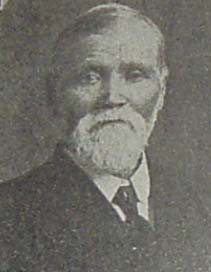
An interesting name from the early days is that of Rev. C. H. Lundgren. He is credited with guiding the organization of the First Swedish Baptist Church of Omaha as well as other churches. This, while being a Polk County resident. Strange as it may seem, in those days the city folks had to rely on the established rural communities to get their immigrant churches started. Swedish Lutherans and Methodists had a similarly difficult time in Omaha with its fluid population. (see www.dalakarl.com/omaha2.html)
In the November 12, 1885, edition of the Headlight we read: "Rev. C. Lundgren has one of the finest houses in the city, and the workmanship as well as the design and finish are most excellent." Also, "Mr. Lundgren is building a large barn and otherwise improving his lots." Also "C. Lundgren is working at the new lumber yard, where they are erecting a new office building." This was the "north" yard of Fred Gray; was it at Moore Lumber's location? While several early Stromsburg clergy were also farmers, it is obvious that Lundgren was a carpenter/pastor. There's good precedent for that, isn't there?
This would account for there being no Lundgren homestead identified by the records. Several scattered farm properties do appear with variants on his name, leading to the speculation that he may have done some dealing in land. This would be consistent with his prosperous image. In the August 19, 1886, issue it is duly reported that "Rev. C. Lundgren is in Omaha," affirming what was stated in the opening paragraph. He is also reportedly "carpentering in Wahoo." The question of what became of Lundgren is answered....the pastures must have been greener in Wahoo, for he moved there with his family according to the March 17, 1887, issue. This may explain why his lots in Stromsburg cemetery have no markers and probably no burials.
There is more to the Lundgren story; he figures prominently if somewhat infamously in C. F. Sandahl's account of the Swede Home Church. Lundgren is engaged as their first pastor, but when a number of Swedish Baptists arrive on the scene, he prefers their company instead, and is both baptized and enrolled as their pastor...at the Mattias Samuelson homestead.
His vacated property is occupied by Andrew Anderson, evidently to do some work there. This is indicated by Anderson's placing a lien on that property as reported on the 31st. In the May 12th issue, "John Wilson, Pleasant Home, has bought the C. Lundgren property in the north part of town." By its description it was approximately at the location on which the house of Calmer and Dorothy Youngquist was built, west of Wall on 9th. No vintage house or barn remains there.
-Dalakarl
.........................
For retired people, or "pensioners" as they are called in Sweden, a highlight of the day may be the trip to the post office. During the week before Christmas, 1886, the Headlight editor, I.D. Chamberlain had an eventful post office trip. He found himself lying on the floor, having been "decked" by the Postmaster, John Frawley, and presently being kicked (according to allegations) by the latter party!
The result was a predictable legal and journalistic "stir" which would go on for some time. But it might be of interest to examine the possible causes which led up to this infamous Chamberlain/Frawley affair. It is obvious that editor Chamberlain lived for politics. Reporting on the doings of the Swedes was just a necessary sideline of his job...we wish it were otherwise, but it is what it is.
Wenngren and his Swedish newspaper, from which this column takes its name, must have sensed this attitude on the part of Chamberlain and took advantage of the opportunity to fill a void. Swedes may have gotten into scraps, but it would likely have taken place on the "west side," not at the post office.
As best we can figure it out, Chamberlain had published an opinion that Frawley in some official capacity had been part of an action that did not serve the best interests of the populace. Frawley took strong exception to this opinion, and vowed to make Chamberlain fully aware of his displeasure. The editor probably did not expect the form which this expression would take that morning at the post office.
In the aftermath, legal remedy was sought and Frawley was brought before the authorities. There was no conclusive action taken, and it seems that witnesses were divided in their accounts, probably along party lines. At least that is the impression one receives from the reporting in the Headlight, which would have been hard pressed to be completely objective in the case.
Chamberlain must have seen some humor in the whole thing, for the Headlight later reported that money was being raised in Osceola to enlist someone to punch out their editor!
-Dalakarl
...................
1885 saw a flurry of prosperous activity in Stromsburg (much like the current time), especially among those the Headlight calls "the Baptist friends." Somewhat overshadowed by the excitement of the new college rising on the east side of town was the new Baptist church building. In October it is reported that: "John Hernbloom has finished the mason work on the church and laid the last brick on the college walls..." And by November 19th, "The new Baptist church is now ready for the inside paint."
A sidelight to this story involves the fate of the old frame Baptist church. On December 10th readers found that "the new Baptist church will likely by finished on or before Christmas, and Ford takes the old one." (more about Ford later) Winter had intervened and on December 31st a delay had been encountered: "The old church would have been moved away, but for the storm." On the brighter side, "the radiators for the church and college have come..."
It would be April, 1886, before "The old Baptist church, now Presbyterian, is on wheels -- caught the 'moving' spirit." (!) This startling bit of news follows on several notices in past months that a group of Presbyterians had been meeting and organizing in Stromsburg. By May, "The Presbyterian church now stands on a good brick foundation." By July 22nd, "The Presbyterian friends have concluded to plaster their church," and the Rev. E. C. Haskell is called as their pastor. Some names appearing among their leaders are Ford, McConaughy, Peck, Uhl and Burch.
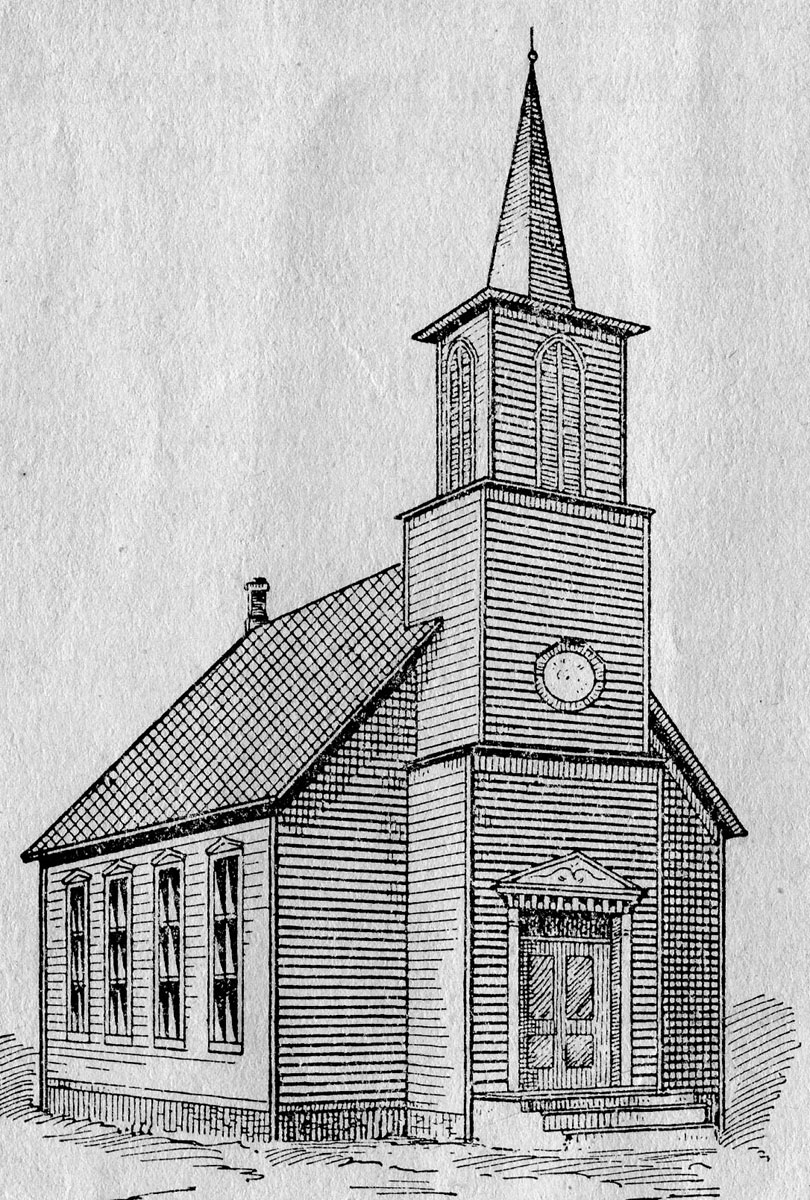
Stromsburg Presbyterian Church, ca.1888; we now know more
The old Baptist church had been recycled! December 9th reveals more about the Fords. The Presbyterian Session cites "the honorable M. M. Ford, Galva, Illinois, for funding the new church." Evidently not all of the Galva connection were Swedes. It would be interesting to know more about the Fords, but even more interesting to this writer to know where the Presbyterian church was located. Can any reader help? (764-5993)
-Dalakarl
.......................
Come with me on an imaginary visit to the Central Bible Seminary of Stromsburg. We enter the north-facing double doors at the top of a five-step flight of stairs and enter the vestibule (for a picture, see page 219 in the red Centennial book). We are directed down a flight of stairs and to the right, where the smells of a banquet dinner invite us in to the 24' x 48' hall prepared for us.
The occasion is the dedication of the new Seminary building, about the first weekend of March, 1886. On our right as we proceed to the dining hall, a full 24' x 28' space is occupied by the kitchen and pantry. On our left are a storage room and laundry. Had we turned left instead of right at the stairs, we would have passed apartments for the help, a locker room and showers, and a 32' x 50+' gymnasium (measurements approximate).
Dinner was scheduled for 1:00 P.M. on Saturday, and followed an address by Rev. J. W. Harris of Omaha's First Baptist Church. According to the Headlight, "some one or two hundred invited guests sat down to dinner." The menu was not reported, but no doubt was a good one. Following the meal, guests proceeded back up the stairs and into the Seminary chapel at the center rear of the building. This 28' x 44' worship hall featured a two-story interior height topped by six beams or arches and a skylight. Six windows opened on adjacent classrooms and six to the outside.
Visiting dignitaries included Rev. Frank Anderson, well-known to Swedish Baptists, and these addressed the assembly in advance of the 3:00 P.M. sermon. That sermon was delivered in English, but a Swedish service was scheduled for 7:00 P.M. that evening in the same place. While their American friends urged the Stromsburg Baptists not to delay in adapting the language of their new homeland, many were not so easily convinced to give up the language of their childhood.
It must have been a full and memorable day! Not only was the Seminary dedicated that weekend, but the new Baptist church building was also dedicated on Sunday! The visiting speakers did double duty. There are many more corners of the Seminary to explore, and we hope to do that in the future. The road ahead will not always be a smooth one, but for this moment in 1886, let's enjoy the bright hopes and excitement of that memorable time. Pass the potato baloney, please.
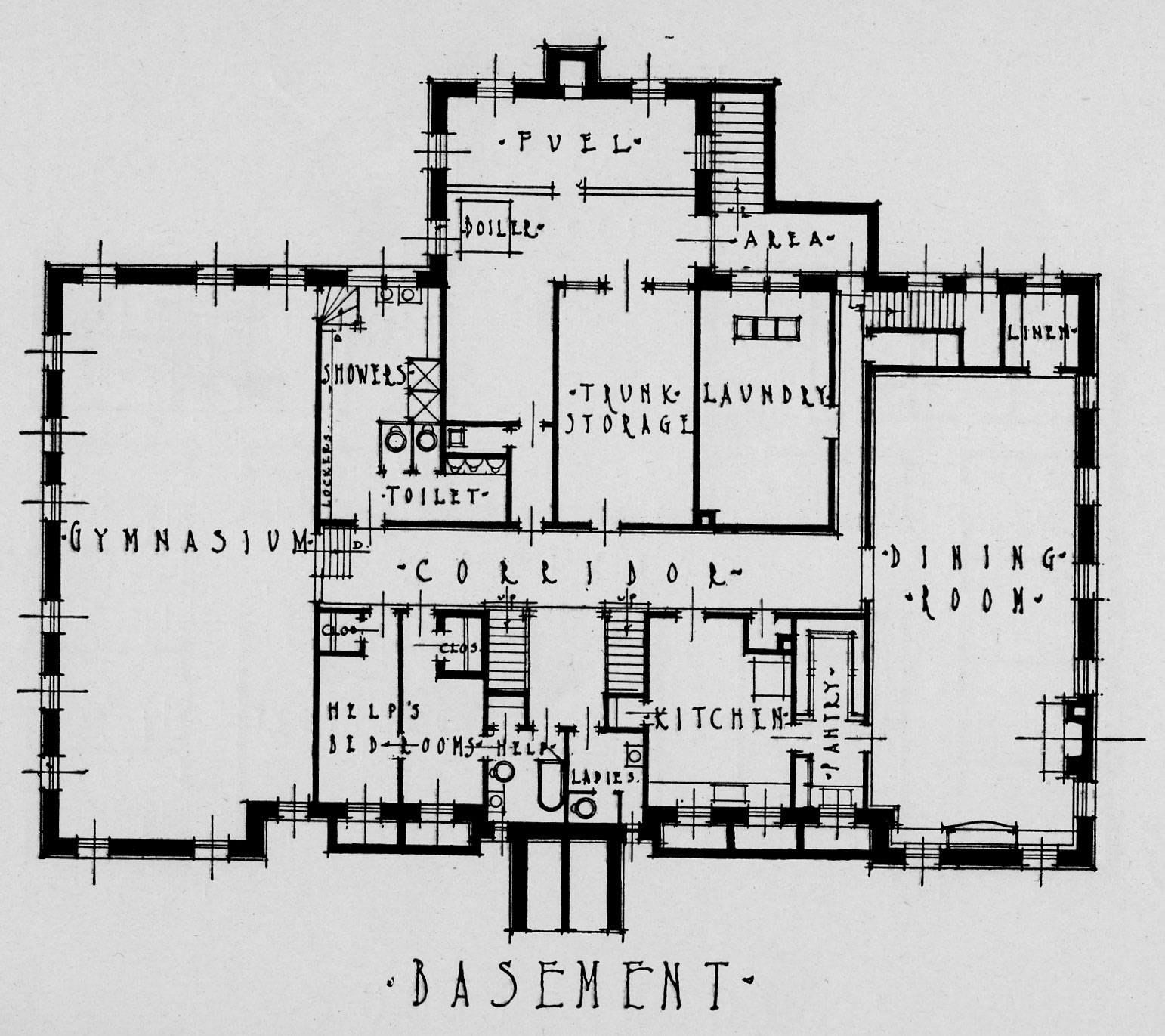
-Dalakarl
...................
When we came to Stromsburg for the first time in 1975, there stood at the corner across north of the seminary site (4th St. between Seminary and Ekeley) a large old house built with Stromsburg brick. Was this the house of the Seminary founder and President, J. A. Edgren? He was a most interesting character.
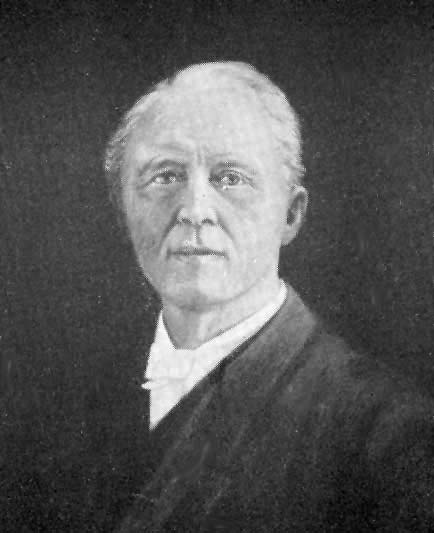
A biographical essay in Adolph and Virgil Olsons' Seventy-five year history of Bethel Seminary reveals the following about Edgren. He was from Värmland, Sweden, born in 1839 to a family which was affluent enough to provide him a good education. Like many, he was attracted to the adventures of seafaring and continued his training in that field. He received the formal rank of First Mate in 1855 and in 1859 achieved the status of Captain, with highest honors. In 1862 he qualified as Teacher of Navigation.
In the meantime, his travels had brought him to the Mariner's Baptist Church in New York, where he was baptized in 1858. Now he was set upon a different course, though before leaving the seafaring life he served the U.S. Navy with distinction in the Civil War. The new course saw him returning to Sweden as a missionary of the American Baptist Missionary Union. He served congregations in Uppsala and Stockholm and taught at their new seminary there.
Back in America, he receives a degree from the Baptist Union Theological Seminary which was thriving with Rockefeller resources on Chicago's south side. There he establishes a Scandinavian department in 1871. He is serving as pastor of First Swedish Baptist church in Chicago's old "Swedetown" and planning a school in its basement when it is wiped out by the great Chicago fire. We stood at its location in 2010, a picture can be seen on the Dalakarl website.
The Baptist Union school was in Morgan Park, later moved to the Hyde Park University of Chicago area. Difficulties in resolving the differences between established Americans and the immigrants led to a move, first to Minnesota and then to Stromsburg. Surely in one of those places the Swedes could find a peaceful place to follow their dream. The Headlight has this to say about Edgren: "Many of our people may not know that Dr. J. A. Edgren, the president of the seminary, is really the great motive power around which the whole Swedish Baptist Church in America revolves...and to him they look as the father of this church in America."
The Headlight accounts from the eighties have Edgren still moving restlessly about; to Sweden, to California, to leaving the Stromsburg Baptist Church to begin his own congregation. His colleague and financial officer, A. B. Orgren, is dismissed. There is something tragic in this story as sometimes befalls people of power and genius. He leaves to spend his remaining days in California; the Seminary goes to St. Paul where it remains today as Bethel College and Seminary.
Has Stromsburg ever seen his likes again? Think of him when you drive by 4th and Ekeley...I do.
-Dalakarl
........................
The volatile fortunes of Rev. A.B. Orgren
Following are excerpts from the Stromsburg newspaper:
11/26/1885: "Two hundred friends surprised Rev. A.B. Orgren Tuesday night. They hung up a beautiful chandelier, and Rev. A.P. Ekman made a little address to the people and brother Orgren on his work and the success of the college and the church."
March 1886, from the dedication article of the new Baptist church and college:
"Rev. A.B. Orgren then reviewed the financial standing of the seminary in his earnest and original way, for which he is gifted... But what P.P. Stewart was to Oberlin, Rev. A.B. Orgren was to the school. His was, and is, the task of raising the money to carry on the work, and he does it as few men in the world could."
But wait;
5/20/1886: "We are sorry to notice that the Swedish Baptist Seminary has found it necessary to promptly expel Rev. A.B. Orgren, and sever his connection with the College entirely, believing him not worthy of confidence or trust, and the Baptist church has also excluded him from membership."
5/20/1886: "The sooner the College gets rid of such men as Orgren and Wenngren, the better it will be for the school."
Orgren was among the first graduates of Edgren's seminary in Chicago; served churches in Chicago and Minneapolis; was a musician and fund raiser. He is credited with persuading Edgren to move the school to Stromsburg. He continued his ministerial career without undue interruption in California, as did Edgren, after leaving Stromsburg. Will the details of this episode ever be known?
......................
While living in Iowa, we passed a sign on the way to Mt. Pleasant which pointed to the north and read "Historic Swedish Chapel," or words to that effect. It was only years later that we ventured off the highway to see what this was all about, and are we glad we did!
Readings from the early days of Swedish Lutherans, Baptists and Methodists all mentioned this community. It was called "New Sweden," and this is a brief overview of its story.
Peter Cassel was an early organizer of immigration who came to New Sweden. His role was so significant that there is an emigration museum in Sweden named after him. As usual, the Swedes clustered together near Brush Creek in the rolling hills north of Lockridge, IA. Lockridge came later with the railroad and still sees the Zephyr passenger trains passing through.
The spiritual needs of the immigrants were important to Cassel, and he arranged for a mission pastor supported by the people over at Andover, IL to organize a congregation at New Sweden. Though it was very much on the frontier in the 1850's, missionaries from the Swedish Episcopal, Baptist, Methodist, and even Mormons visited there and made matters complicated for the newcomers.

The upshot of all this was that there were three country churches built along one mile of the New Sweden settlement: Lutheran, Methodist and Baptist. Today the Lutheran building is the only one remaining and it is reckoned as the earliest surviving Augustana church. Reportedly a thousand people gathered there at the centennial anniversary. The building is well maintained by the Lockridge congregation and used only for special occasions.
Cassel himself joined with the Methodists and is buried at their cemetery (each churches' cemetery remains). This church was the third oldest Swedish Methodist church in America. Unfortunately, it had burned down not long before our visit. The grounds had not yet been seeded to grass. There are pictures of these places and a more complete story on the dalakarl.com website.
But the most interesting story belongs to the Baptists. In 1931, fifteen hundred Swedish Baptists came back to New Sweden for their jubilee, to the place where the first Swedish Baptist church in the world had been built. The congregation had suffered when many of their leading families moved away: Olaf "sailor" Petersons, Peter Carlsons, Magnus and Charles Carlsons, Leander Blooms and others.
And where did those families go when they left New Sweden? Why, they went to Stromsburg! It's well documented, and their markers can be seen in our cemetery.
-Dalakarl
...............
Folkets Vän was the name of a Swedish newspaper published briefly in Stromsburg in the 1880's. It means "Peoples' Friend." Recently I was very excited when I saw what looked like an original issue of that paper. Here's the story:
Several years ago we visited the Saunders County Museum in Wahoo where we met the Kenneth Carlsons and their friends the Hedlunds who were the volunteers on duty. We could not have been more fortunate since they were members of two of the oldest Swedish churches in the area; Swedeburg Mission (now Covenant) and Swedeburg Lutheran (now called Grace). It was a great encounter, and one of the things they told us was, "you have to talk to Doug Swanson down in Ceresco; he has lots of old Swedish books."
Too much time had passed, but a carpet shopping trip to Ceresco provided the opportunity at last. Just across the street from Ernie's Store is the place to find Doug and Elaine Swanson, at Swanson Ford, founded 1909. Being excused for a little while from the shopping chores, the adventure began. Two other couples were there that day; one a pair of Swedes from Malmo and another from Hordville! Doug said that the Swedes still come from all over to buy his Fords!
Much of the archive apparently is kept right there at the dealership, as he retrieved boxes of scrap books and memorabilia from the back room. We were enjoying coffee at a customers' table right beside a pristine 1932 rumble seat roadster. It was in the back of one of the scrapbooks that a year or more of editions of that Swedish newspaper suddenly appeared, well preserved in their plastic sleeves. That's when my heart skipped a beat.

But it was "Forsamlings Vännen" (The Congregation's Friend), not "Folkets Vän." That wasn't really too disappointing, since this was yet another example of immigrant church journalism produced by the Mission Church of Ceresco. Doug and Elaine even made me a copy of the Christmas issue, 1919, and invited us back to delve more deeply into their collection. I can't wait.
-Dalakarl
...................